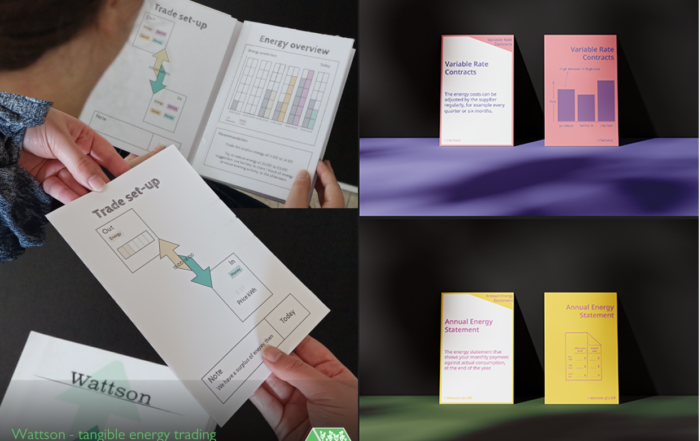Why co-creation is needed for Smart Home Technology to address diverse household needs & practices.
Sylvia Breukers (Duneworks) comments on the Buildings & Cities special issue ‘Energy, Emerging Technologies and Gender in Homes‘. Who (and what) needs Smart Home Technology (SHT) and for what purposes? What are the ideas, expectations and promises behind SHT and how do these correspond to actual (gendered) experiences?
Normalising discussions on gender and new design approaches
Reading the articles in this special issue will probably be a festival of recognition, in particular for ‘intermediaries’ trying to improve ways in which smart technologies are designed and introduced in residential contexts. By articulating and making explicit what is found in interactions with householders, we direct attention to it, we make it ‘more real’, so that we can talk about it outside of our own ‘bubble’ as well. As such this special issue normalises discussions on gender in relation to the (smart) energy transition.
When discussing gender and smart grids with innovation researchers, the question arose why the focus is on women, rather than addressing all people; an argument in favour of gender-blindness, as if the context in which we are working is a tabula rasa, with no pre-existing norms, institutionalised inequalities and mechanisms to perpetuate these. The answer is a need for recognitional justice – recognising the broad diversity of citizens and groups, because only those that are recognised will be invited as stakeholders with relevant knowledge, needs and interest in processes around smart technology design and its introduction. This also means that we need to pay extra attention to those hitherto excluded from these processes: more often it is women than men.
This special issue provides additional examples of how women are more likely to be excluded due to the combination of various factors: a male-dominated tech sector; dominant norms in the design practices (Strengers et al. 2022); processes of accumulation of interest and expertise that tends to be concentrated with one person (Aagaard and Madsen 2022) and the risks of exclusion within household – extended even to surveillance risks (Aagaard and Madsen 2022; Martin 2022); and how in policy and industry a particular promise of SHT is to a large extent non-reflective of actual needs within households (Chambers 2022).
Attention to gender means opening up to diversity (including attention to women, diverse age groups and related needs, people with health conditions), not zooming in and excluding groups. And yes, future research could include a wider variety of genders, more varied household compositions in more diverse settings (socio-economically; geographically, culturally). Moreover, there is a need for more systematic gender disaggregated data to show policy makers that gender-blindness is counter-effective to closing the income and educational gaps between men and women (Clancy and Feenstra 2019; Mohideen et al. 2022).
Another question that arises is: does this approach merely reinforce stereotypes by looking into gender and then describing your findings with reference to men and women? The answer is that, indeed, we should be careful about that, but that by more actively engaging women and other genders / underrepresented stakeholders in processes of technology design, development and use, this can be overcome. Moreover, engaging more diverse types of users in smart technology design, in combination with experiments that actively counteract or disrupt stereotypes (Martin 2022) can help to open up a design process that caters for a more diverse range of gender identities and the introduction of other norms. Ideas of regarding SHT as facilitating care-provision are promising (Chambers 2022). Not just engaging more diverse users, but taking household management/coordination as a point of departure rather than ‘energy management’ can also work as a norm-creative design approach that moves away from stereotypes.
Less is more or the paradox of unburdening
SHT technology is often promoted as ‘unburdening’ to the individual. But is it? The promise of ‘unburdening’ only works if everything works flawlessly and no new burdens are introduced in managing it. When smart energy technology malfunctions, the stress is doubled because of the two difficulties: assessing where the problem resides and how to get it ‘repaired’. It is unclear who is responsible: the battery provider or the smart grid provider. When asked what they needed to get a better grip on their smart energy homes, women in a Dutch pilot study agreed that they want a list of whom to call if things don’t work the way they should. They want to know how things work, and clear guidelines in case of malfunction.
A further burden is that residents experience feelings of shame for not understanding the smart technology – this occurs more among women than among men. Residents want to be in control of their home and household management. What does it mean to be in control in a smart energy home context? How much effort is needed to gain, develop and apply digital and energy-technological knowledge? How clear, accessible or intuitive is this new knowledge? Participants to our focus groups argued in favour of less, rather than more digital technology. They expressed app-fatigue, preferring instead ‘rules of thumb such as sun shines ⇒ washing machine on. Energy dashboards for some bring an additional burden rather than the other way around.
Political-institutional change in smart technology development
Multiple examples in this special issue confirm that SHT may well create new problems and burdens rather than taking these away. Rather than assuming and accepting a future with a ubiquitous presence of smart technologies, we should be continuously asking: why and how these technologies would improve our (and whose) lives and at what (and whose) cost? As women still bear most responsibilities when it comes to the physical and cognitive housekeeping and associated mental load (Aggeli 2022), they need to play a much more central role in designing smart technologies. Women need to feel empowered to actively question, ridicule and refuse some of the current technologies.
The contributions in this special issue point towards avenues for change. Chambers (2022) proposes an approach that starts with the household dynamics and needs, rather than with a technological promise that presents solutions for non-existing problems. Although research & demonstration (R&D) projects increasingly include more attention for user engagement, have a gender clause, and include social science-based action researchers like ourselves, they still have a brief and structure that does not allow for in-depth gender-sensitive design practices. In the course of such projects, the scope for social science issues and participation is very limited. In worst cases, intermediaries and researchers end up summarising ex-post what has gone wrong again and why – not because they did not see it coming, but because they had no power to change it.
Often the willingness of technology providers to take gender into account decreases when the ‘pre-coded technologies’ (Chambers 2022) that they bring into the projects become the subject of discussions, or when the pre-envisioned business model for the smart grid provider becomes the subject of discussion. Then the wide differences in interests become obvious, and the participatory exercises become limited to e.g., questions around which language is best used in the interfaces of energy dashboards instead of rethinking the design of the solutions themselves.
However, R&D engagement can be restructured in a more positive manner. The technical and social dimensions can be more balanced – also in terms of the budgets provided. Engaging social scientists more actively in the design of these programmes and experimenting with different points of departure that focus on e.g., care, health and well-being rather than technological-commercial competitiveness would be a good first step. For example, see the work done by the IEA Users Technology Collaboration Programme’s Task on Gender & Energy which is explicitly focused on the needs for institutional changes including gender related issues. Why not start by translating the conclusions and recommendations from this special issue about the need to engage with women (and differentiate between genders) into improved (policy and technical) design practices? Why not target organisations (i.e. R&D funders and their research programmes) so that these become truly aimed at more citizen-centred energy transition (or housing provision; health care system; digitalisation strategy)? This would be a start to changing the overarching political-institutional structures as well.
References
Aagaard, L.K., & Madsen, L.V. (2022). Technological fascination and reluctance: Gendered practices in the smart home. Buildings and Cities, 3(1), 677–691. https://doi.org/10.5334/bc.205
Aggeli, A., Christensen, T.H., & Larsen, S.P.A.K. (2022). The gendering of energy household labour. Buildings and Cities, 3(1), 709–724. https://doi.org/10.5334/bc.224
Chambers, D. (2022). Attuning smart home scripts to household and energy care. Buildings and Cities, 3(1), 663–676. https://doi.org/10.5334/bc.220
Clancy, J.S. & Feenstra, M. (2019), Women, Gender, Equality and the Energy Transition in the EU. FEEM.
Martin, R. (2022). Energy housekeeping: intersections of gender, domestic labour and technologies. Buildings and Cities, 3(1), pp. 554–569. https://doi.org/10.5334/bc.218
Mohideen, R., Åberg, A., Mareels, I. (2022). Gender and technology: the case of the energy sector. DIITA-Gender Equality and Social Inclusion (GESI) Workstream White Paper. Institute of Electrical and Electronics Engineers (IEEE) Industry Reports.
Strengers, Y., Gram-Hanssen, K., Dahlgren, K., & Aagaard, L K. (2022). Energy, emerging technologies and gender in homes. Buildings and Cities, 3(1), pp. 842–853. https://doi.org/10.5334/bc.273


